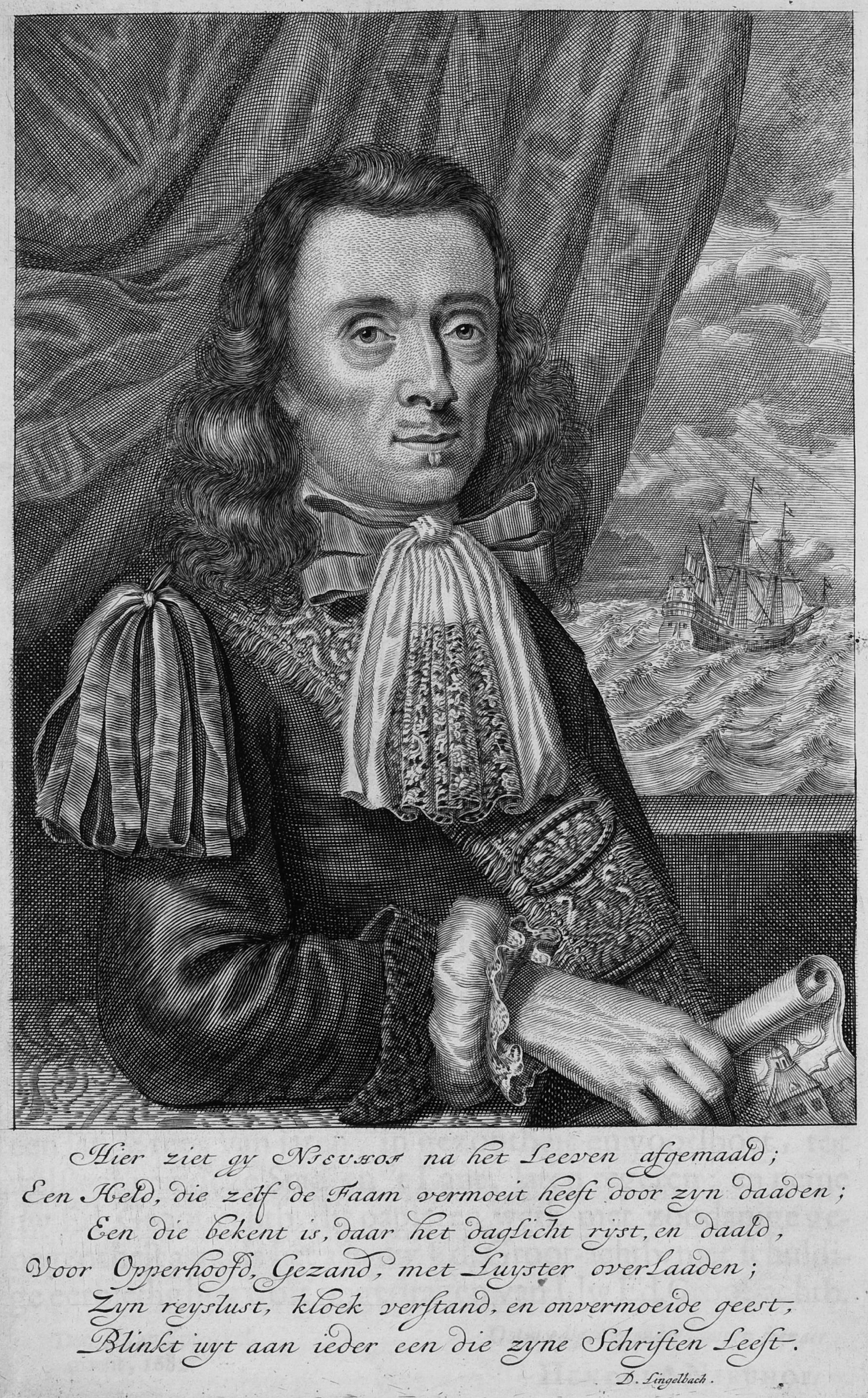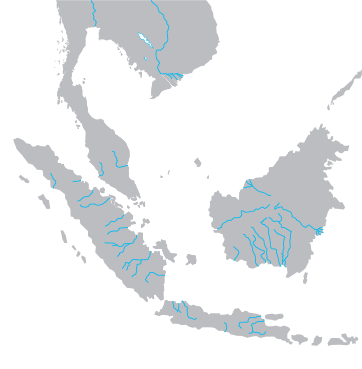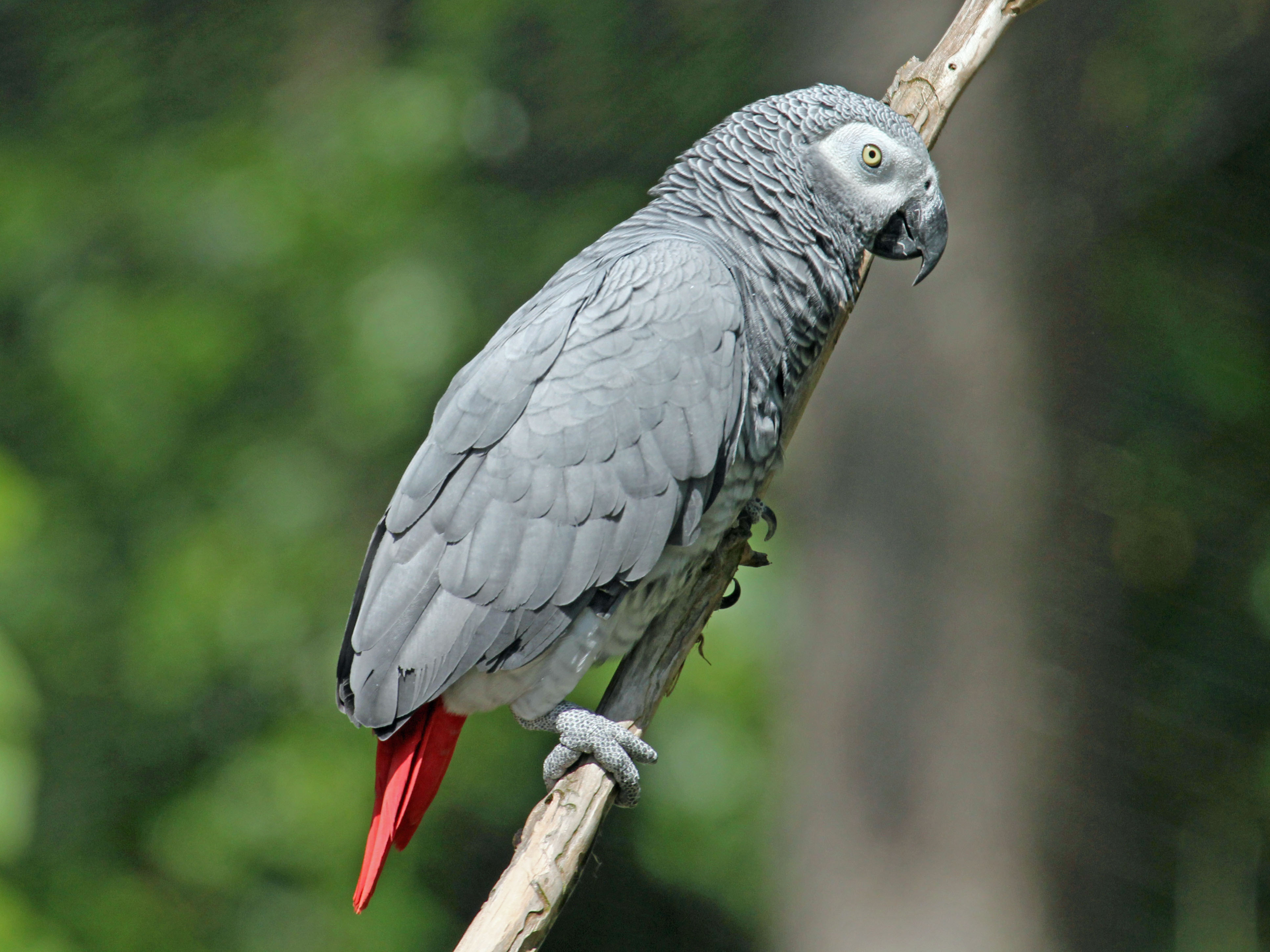|
Lorini
Loriini is a tribe (biology), tribe of small to medium-sized arboreal parrots characterized by their specialized brush-tipped tongues for feeding on nectar of various blossoms and soft fruits, preferably berries. The species form a monophyletic group within the parrot family Psittaculidae. The group consists of the lories and lorikeets. Traditionally, they were considered a separate subfamily (Loriinae) from the other subfamily (Psittacinae) based on the specialized characteristics, but recent molecular and morphological studies show that the group is positioned in the middle of various other groups. They are widely distributed throughout the Australasian region, including south-eastern Asia, Polynesia, Papua New Guinea, Timor Leste and Australia, and the majority have very brightly coloured plumage. Etymology The word "lory" comes from the Malay language, Malay ''lūri'', a name used for a number of species of colourful parrots. The name was used by the Dutch writer Johan Nieuhof ... [...More Info...] [...Related Items...] OR: [Wikipedia] [Google] [Baidu] |
Glossopsitta
The musk lorikeet (''Glossopsitta concinna'') is a Lories and lorikeets, lorikeet, now the only species in the genus ''Glossopsitta''. It inhabits south-central/eastern Australia. The little lorikeet and the purple-crowned lorikeet were previously included in the genus. The musk lorikeet was first described by ornithologist George Shaw (biologist), George Shaw in 1790 as ''Psittacus concinnus'', from a collection in the vicinity of Port Jackson in what is now Sydney. John Latham (ornithologist), John Latham described it as ''Psittacus australis''. Its specific epithet is the Latin ''concinna'' "elegant". Other common names include red-eared lorikeet, and green keet,Lendon, p. 23 and formerly a local Sydney indigenous term ''coolich''. The names green leek and king parrot have been incorrectly applied to this species in the past. Description The musk lorikeet is long. It is mainly green and it is identified by its red forehead, blue crown and a distinctive yellow band on its win ... [...More Info...] [...Related Items...] OR: [Wikipedia] [Google] [Baidu] |
Collared Lory
The collared lory (''Vini solitaria'') is a species of parrot in the family Psittaculidae. It is endemic to the islands of Fiji. It is the only Fijian rainforest bird to adapt to urban landscapes and can be found in urban Suva. Measuring , it has bright red underparts and face with a purple crown and greenish upperparts. Males and females are similar in plumage, although the latter have a paler crown. Taxonomy The collared lory was first described by German naturalist Georg Adolf Suckow in 1800, and placed in the genus ''Phigys'' by English naturalist George Robert Gray in 1870. It was moved to the genus '' Vini'' based on a molecular phylogenetic study of the lorikeets published in 2020. The Fijian name is ''kula''. The bird was prized throughout western Polynesia for its vibrant plumage and the maritime trading networks based on "kula" feathers existed between Fiji, Samoa, and Tonga up until colonial times. Both the bird and its plumage are called "ula" in Samoan and "kula" ... [...More Info...] [...Related Items...] OR: [Wikipedia] [Google] [Baidu] |
Saudareos
''Saudareos'' is a genus of parrot in the family Psittaculidae. Species identified within this genus include lorikeets from the Philippines and Indonesia. Taxonomy The genus ''Saudareos'' was introduced in 2020 for a clade of lorikeets that form a sister clade to ''Eos''. The type species is the ornate lorikeet. The genus name combines the Indonesian language "saudara" meaning "sister" with the genus name ''Eos''. The genus contains three species which were formerly assigned to ''Trichoglossus ''Trichoglossus'' is a genus of Lories and lorikeets, lorikeet in the Psittaculidae or true parrot superfamily. The genus is distributed widely through Australia, Wallacea and Melanesia, with outliers in the Philippines and Micronesia. Members ...'' and one that was assigned to '' Psitteuteles. The genus contains the following five species: References Bird genera {{parrot-stub ... [...More Info...] [...Related Items...] OR: [Wikipedia] [Google] [Baidu] |
Johan Nieuhof
Johan Nieuhof (22 July 1618 – 8 October 1672) was a Dutch traveler who wrote about his journeys to Brazil, China and India. The most famous of these was a trip of from Canton to Peking in 1655-1657, which enabled him to become an authoritative Western writer on China. He wrote '' An Embassy from the East-India Company'' about the journey. Biography Johan Nieuhof was born in Uelsen, a town in the county of Bentheim, Lower Saxony, sitting just across the Dutch-German border. His father (originally from Zwolle) was mayor of the town, and was later succeeded by one of Johan's brothers and brother-in-law. By the grace of Cornelis Jan Witsen, a leading figure within the Dutch West India Company (or "WIC"), Nieuhof left for Dutch Brazil in 1640 as a reserve officer-candidate. From then on, barring two short family visits in 1658 and 1671, he spent all the rest of his life abroad. Nieuhof was employed in Brazil to explore the regions between Maranhão and the São Francisco Rivers, ... [...More Info...] [...Related Items...] OR: [Wikipedia] [Google] [Baidu] |
Malay Language
Malay ( , ; , Jawi alphabet, Jawi: ) is an Austronesian languages, Austronesian language spoken primarily by Malays (ethnic group), Malays in several islands of Maritime Southeast Asia and the Malay Peninsula on the mainland Asia. The language is an official language of Brunei, Malaysia, and Singapore. Indonesian language, Indonesian, a standardized variety of Malay, is the official language of Indonesia and one of the working languages of East Timor. Malay is also spoken as a regional language of Malays (ethnic group), ethnic Malays in Indonesia and the Thai Malays, southern part of Thailand. Altogether, it is spoken by 60 million people across Maritime Southeast Asia. The language is pluricentric and a ISO 639 macrolanguage, macrolanguage, i.e., a group of Mutual intelligibility, mutually intelligible speech varieties, or dialect continuum, that have no traditional name in common, and which may be considered distinct languages by their speakers. Several varieties of it ar ... [...More Info...] [...Related Items...] OR: [Wikipedia] [Google] [Baidu] |
Timor Leste
Timor-Leste, also known as East Timor, officially the Democratic Republic of Timor-Leste, is a country in Southeast Asia. It comprises the eastern half of the island of Timor, the coastal exclave of Oecusse in the island's northwest, and the outer islands of Atauro and Jaco. Timor-Leste shares a land border with Indonesia to the west, and Australia is the country's southern neighbour, across the Timor Sea. The country's size is . Dili, on the north coast of Timor, is its capital and largest city. Timor was settled over time by various Papuan and Austronesian peoples, which created a diverse mix of cultures and languages linked to both Southeast Asia and Melanesia. East Timor came under Portuguese influence in the sixteenth century, remaining a Portuguese colony until 1975. Internal conflict preceded a unilateral declaration of independence and an Indonesian invasion and annexation. The subsequent Indonesian occupation was characterised by extreme abuses of human ... [...More Info...] [...Related Items...] OR: [Wikipedia] [Google] [Baidu] |
Papua New Guinea
Papua New Guinea, officially the Independent State of Papua New Guinea, is an island country in Oceania that comprises the eastern half of the island of New Guinea and offshore islands in Melanesia, a region of the southwestern Pacific Ocean north of Australia. It has Indonesia–Papua New Guinea border, a land border with Indonesia to the west and neighbours Australia to the south and the Solomon Islands to the east. Its capital, on its southern coast, is Port Moresby. The country is the world's third largest list of island countries, island country, with an area of . The nation was split in the 1880s between German New Guinea in the North and the Territory of Papua, British Territory of Papua in the South, the latter of which was ceded to Australia in 1902. All of present-day Papua New Guinea came under Australian control following World War I, with the legally distinct Territory of New Guinea being established out of the former German colony as a League of Nations mandate. T ... [...More Info...] [...Related Items...] OR: [Wikipedia] [Google] [Baidu] |
Polynesia
Polynesia ( , ) is a subregion of Oceania, made up of more than 1,000 islands scattered over the central and southern Pacific Ocean. The indigenous people who inhabit the islands of Polynesia are called Polynesians. They have many things in common, including Polynesian languages, linguistic relations, Polynesian culture, cultural practices, and Tradition, traditional beliefs. In centuries past, they had a strong shared tradition of sailing and Polynesian navigation, using stars to navigate at night. The term was first used in 1756 by the French writer Charles de Brosses, who originally applied it to all the list of islands in the Pacific Ocean, islands of the Pacific. In 1831, Jules Dumont d'Urville proposed a narrower definition during a lecture at the Société de Géographie of Paris. By tradition, the islands located in the South Seas, southern Pacific have also often been called the South Sea Islands, and their inhabitants have been called South Sea Islanders. The Hawai ... [...More Info...] [...Related Items...] OR: [Wikipedia] [Google] [Baidu] |
Psittacinae
Psittacinae (Afrotropical parrots, African parrots, or Old World parrots) is a subfamily (biology), subfamily of parrots, native to sub-Saharan Africa, which include twelve species and two Extant taxon, extant genus, genera. Among the species is the iconic grey parrot. The ''Poicephalus'' are usually green birds with different colored heads; the larger ''Psittacus'' are light grey with red tails. African parrots (at least the grey parrot) have been known in Europe since Roman Empire, Roman times. The African parrots, unlike their Neotropical cousins, are polyphyletic: ''Agapornis'' of Africa and Madagascar was found to be the sister group to ''Loriculus'' of Australasia and Indo-Malayasia and together they clustered with the Australasian ''Loriinae'', ''Cyclopsittacini'' and ''Melopsittacus''. ''Poicephalus'' and ''Psittacus'' from mainland Africa formed the sister group of the Neotropical ''Arinae'' and ''Coracopsis'' from Madagascar and adjacent islands may be the closest rel ... [...More Info...] [...Related Items...] OR: [Wikipedia] [Google] [Baidu] |
Psittaculidae
Psittaculidae is a family of parrots, commonly known as Old World parrots, though this term is a misnomer, as not all its members occur in the Old World and Psittacinae also occurs in the Old World. It consists of six subfamilies: Psittrichasinae, Agapornithinae, Loriinae, Platycercinae, Psittacellinae and Psittaculinae. Taxonomy The following cladogram shows how the family Psittaculidae relates to the three other families in the order Psittaciformes. The tree is based on the work by Leo Joseph and collaborators published in 2012 but with the choice of families and the number of species in each family taken from the list maintained by Frank Gill, Pamela Rasmussen and David Donsker on behalf of the International Ornithological Committee (IOC), now the International Ornithologists' Union. Joseph and collaborators proposed that the genera '' Psittrichas'' and '' Coracopsis '' should be placed in their own family, Psittrichasidae. This proposal has not been adopted by taxon ... [...More Info...] [...Related Items...] OR: [Wikipedia] [Google] [Baidu] |
Monophyletic
In biological cladistics for the classification of organisms, monophyly is the condition of a taxonomic grouping being a clade – that is, a grouping of organisms which meets these criteria: # the grouping contains its own most recent common ancestor (or more precisely an ancestral population), i.e. excludes non-descendants of that common ancestor # the grouping contains all the descendants of that common ancestor, without exception Monophyly is contrasted with paraphyly and polyphyly as shown in the second diagram. A ''paraphyletic'' grouping meets 1. but not 2., thus consisting of the descendants of a common ancestor, excepting one or more monophyletic subgroups. A '' polyphyletic'' grouping meets neither criterion, and instead serves to characterize convergent relationships of biological features rather than genetic relationships – for example, night-active primates, fruit trees, or aquatic insects. As such, these characteristic features of a polyphyletic grouping ... [...More Info...] [...Related Items...] OR: [Wikipedia] [Google] [Baidu] |
Parrot
Parrots (Psittaciformes), also known as psittacines (), are birds with a strong curved beak, upright stance, and clawed feet. They are classified in four families that contain roughly 410 species in 101 genus (biology), genera, found mostly in tropics, tropical and subtropics, subtropical regions. The four families are the Psittaculidae (Old World parrots), Psittacidae (African and New World parrots), Cacatuidae (cockatoos), and Strigopidae (New Zealand parrots). One-third of all parrot species are threatened by extinction, with a higher aggregate extinction risk (Red List Index, IUCN Red List Index) than any other comparable bird group. Parrots have a generally pantropical distribution with several species inhabiting temperateness, temperate regions as well. The greatest biodiversity, diversity of parrots is in South America and Australasia. Parrotsalong with Corvidae, ravens, crows, jays, and magpiesare among the most #Intelligence and learning, intelligent birds, and the abil ... [...More Info...] [...Related Items...] OR: [Wikipedia] [Google] [Baidu] |





